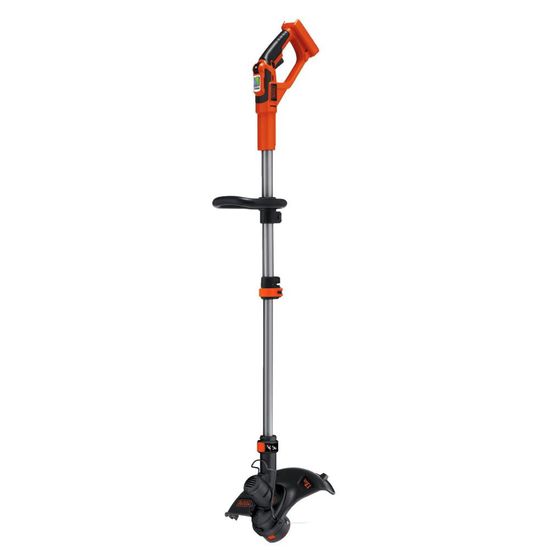A string trimmer, also known as a weed whacker or weed eater (the Weed Eater company invented the yard maintenance tool in 1971), can make short work of tidying up unruly overgrowth, whether tall grass or tough weeds and light underbrush. A weed eater reaches under and around obstacles, helping to keep driveways, walkways, flower beds, and fencing neat where a lawn mower can't. High-end trimmers cost well north of $400, but for $250 or less, you can find a cheap gas or electric trimmer that will do your yard proud. Some cheap weed eaters also boast edging capability and can perform other upkeep chores, even acting as grass trimmers for very small sections of lawn.
Weed Eater Brands
The original Weed Eater brand, which was acquired by the outdoor power tools giant Husqvarna in 1986, is still in the string trimmers game, especially on the budget end of the spectrum, but these days other names also claim a hold on the weed eater trimmer market. Black & Decker, Troy-Bilt, Ryobi, Hitachi, Toro, Greenworks, Remington, Worx, Echo, Ego, Honda, and, of course, Husqvarna itself offer weed whackers at a range of price points, starting at the entry level and climbing up from there. These companies are all well-established outdoor power equipment makers with excellent track records of producing quality gas and/or electric hedge trimmers, lawn mowers, leaf blowers, and other tools for consumers and gardening professionals.
High-end and commercial trimmers are more durable than consumer models, often lasting considerably longer before trimmer replacement becomes necessary. That’s because these heavy-duty models are outfitted with solid steel drive shafts, more powerful engines and other sturdy string trimmer parts that can tolerate thicker, taller grass and brush. They tend to vibrate less than cheap weed eaters and often are compatible with an assortment of attachments that expand their functionality, letting you turn your tool into an electric or gas hedge trimmer, tiller, cultivator, pole saw (for cutting thick brush and trimming trees), and more. Nevertheless, some of the best budget weed whackers are favorites with the pros as well as everyday users.
Gas Weed Eaters
Experts recommend more powerful and costly gas trimmers for large, rural yards with rough terrain. String trimmers fueled by gasoline use a recoil start, but increasingly feature systems that ensure the engine comes to life quickly and without much effort. They have either two-cycle or four-cycle engines. Two-cycle engines use a gas/oil mix; four-cycle engines keep oil separate and can be filled with standard gas or diesel. The latter are quieter and more fuel efficient, have lower emissions, and run more smoothly but generally cost more than those with two-cycle engines.
Many users, including pros, prefer two-cycle trimmers for their lighter weight, greater power to size ratio, and fewer parts to break. Regardless of engine type, gas-fed weed whackers cut a wider path than electric models and are better suited for bigger jobs. As mentioned, some can accept a variety of attachments, allowing them to double as gas hedge trimmers, pole saws, blowers, and the like.
Electric Weed Eaters
For smaller yards and light-duty maintenance, there are several advantages to using an electric trimmer versus a gas trimmer. They are cheaper, of course. They also weigh less – a plus for extended use, better control when trimming around flower beds and such, or just when toting the tool from the storage shed or garage to your garden. They are also quieter than gas models and, of course, emission-free.
If you want an electric trimmer your choices come down to corded string trimmers or cordless models. Both have some downsides worth noting, however. Corded weed trimmers must remain tethered to a power source, and just maneuvering around the cord may be a hassle. Cordless weed eaters may suffer from short run times — don't expect any really cheap cordless weed eaters to have the capacity to conquer even a half-acre yard without needing to recharge — and their batteries need to be replenished after each use. That said, some newer models, including our favorites, take lithium ion batteries that recharge in just one or two hours.
Straight Shaft vs. Curved Shaft Trimmers
All the weed eaters we recommend feature a long, straight shaft, and a couple have a telescoping design. The alternative, a curved-shaft trimmer, might be the right choice when working in very tight spaces where easy maneuverability is needed, such as around flower beds. If those are your needs, you can opt for a curved shaft gas string trimmer or an electric (corded or cordless) model.
Straight shaft trimmers, on the other hand, tend to be more heavy duty than curved shaft trimmers. They are an especially good choice for properties where you will be doing a lot of trimming under shrubs and bushes. Frugal consumers will find far more straight-shaft trimmers to choose among.
 String trimmers specialize in cutting grass and weeds where a lawn mower won't do. They're perhaps better known as weed eaters, after the company that pioneered the tool in the 1970s and has become as synonymous with its product as Xerox or Kleenex. Cheapism cut through scores of expert and user reviews to identify the best string trimmers for $250 or less. Our top picks include both gas and electric versions (corded and cordless) and come from outdoor power equipment manufacturers known for quality, value, and performance. Although we looked first for the best cheap weed eaters, we've rounded out the list with a few other options, including a heavy-duty gas trimmer for bigger jobs, plus a cheap corded model that doubles as an edger for clean lines along pathways and around planters.
String trimmers specialize in cutting grass and weeds where a lawn mower won't do. They're perhaps better known as weed eaters, after the company that pioneered the tool in the 1970s and has become as synonymous with its product as Xerox or Kleenex. Cheapism cut through scores of expert and user reviews to identify the best string trimmers for $250 or less. Our top picks include both gas and electric versions (corded and cordless) and come from outdoor power equipment manufacturers known for quality, value, and performance. Although we looked first for the best cheap weed eaters, we've rounded out the list with a few other options, including a heavy-duty gas trimmer for bigger jobs, plus a cheap corded model that doubles as an edger for clean lines along pathways and around planters.


 Takeaway: The Echo SRM-225 is our choice for best string trimmer under $250. Although it's a bit pricier than other gas-powered weed trimmers, its power and reliability make it a consumer favorite in this price range. Reviewers say it slices through tough weeds with ease and is easy to handle. Some users do note that because this string trimmer is fairly powerful it can be easy to over-trim when edging. Step up to the SRM-225i (
Takeaway: The Echo SRM-225 is our choice for best string trimmer under $250. Although it's a bit pricier than other gas-powered weed trimmers, its power and reliability make it a consumer favorite in this price range. Reviewers say it slices through tough weeds with ease and is easy to handle. Some users do note that because this string trimmer is fairly powerful it can be easy to over-trim when edging. Step up to the SRM-225i (
 Takeaway: The Black & Decker LST136W 40v cordless string trimmer is our first choice for electric electric weed eaters trimmers under $250. Although probably not the best match for large yards, it's a powerful string trimmer/edger with good battery life and thousands of positive reviews. Even accounting for the slightly narrow cutting swath and occasional string-feed glitches, this is an excellent cordless trimmer at an attractive price. For even smaller yards, and smaller budgets, the Black & Decker LST300 ($73 from
Takeaway: The Black & Decker LST136W 40v cordless string trimmer is our first choice for electric electric weed eaters trimmers under $250. Although probably not the best match for large yards, it's a powerful string trimmer/edger with good battery life and thousands of positive reviews. Even accounting for the slightly narrow cutting swath and occasional string-feed glitches, this is an excellent cordless trimmer at an attractive price. For even smaller yards, and smaller budgets, the Black & Decker LST300 ($73 from 












